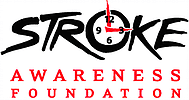 DURING A STROKE: BE FAST – CALL 911 IMMEDIATELY
DURING A STROKE: BE FAST – CALL 911 IMMEDIATELY
In case of stroke every minute counts
-
In one second 32,000 brain cells die
-
In the next 59 seconds an ischemic stroke can kill 1.9 million brain cells.
Transport via 911 leads to most expedited treatment and the best possible outcome for a stroke patient.
Activating emergency medical services (EMS) is the most important factor in reducing delay times to hospital arrival for stroke patients.
- EMTs can direct patients to certified stroke centers. An EMT is able to direct the patient to a hospital that is designated and certified to treat his/her specific stroke
-
EMTs can direct patients to certified stroke centers. An EMT is able to direct the patient to a hospital that is designated and certified to treat his/her specific stroke
- Notifies ER and confirms fastest route. If a stroke is diagnosed infield, the EMT will notify the closest stroke certified hospital of the emergency and confirm fastest route to treatment
-
Faster care and treatment. Receiving clinician is able to collect pertinent patient information, thus the acute stroke patient will receive appropriate care not only quicker but with more accurate consideration
-
Stroke alert. The receiving hospital calls “Stroke Alert” and the stroke team assembles in the ER for the incoming patient
-
Saves lives. This system is in place to improve patient outcomes and save lives
Stroke is an emergency. Call 911 immediately.
Why not find an alternate transport to the ER?
- Driving one to the hospital will cost a stroke patient time lost to treatment waiting for admission with the general populations in the Emergency Room
- The hospital will not be able to prepare for the patient with further time lost to lifesaving treatment
- The patient will not be able to receive immediate stabilizing treatment by the EMT
- Delay in treatment for stroke leads to worse outcomes, lifetime of disability or worse
How much does an ambulance ride cost?
- Although the cost of the ambulance transport might vary depending on insurance coverage and other factors, the costs of living with disability from a stroke far outweigh the cost of the lifesaving ambulance ride.
- An EMT will assess the symptoms and ONLY transport the patient if diagnoses affirms suspicion of a stroke – there is NO COST to the patient if stroke is excluded
FAST action leads to good outcome.
Case Study by Regional Medical Center of San Jose.
 .
. 



